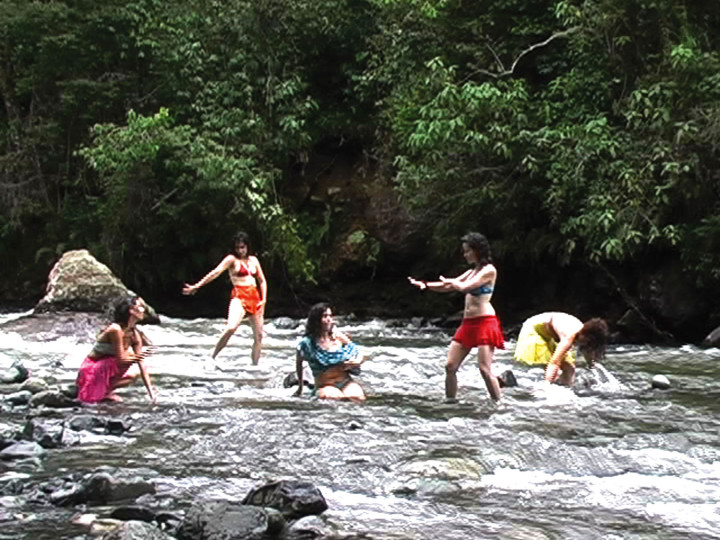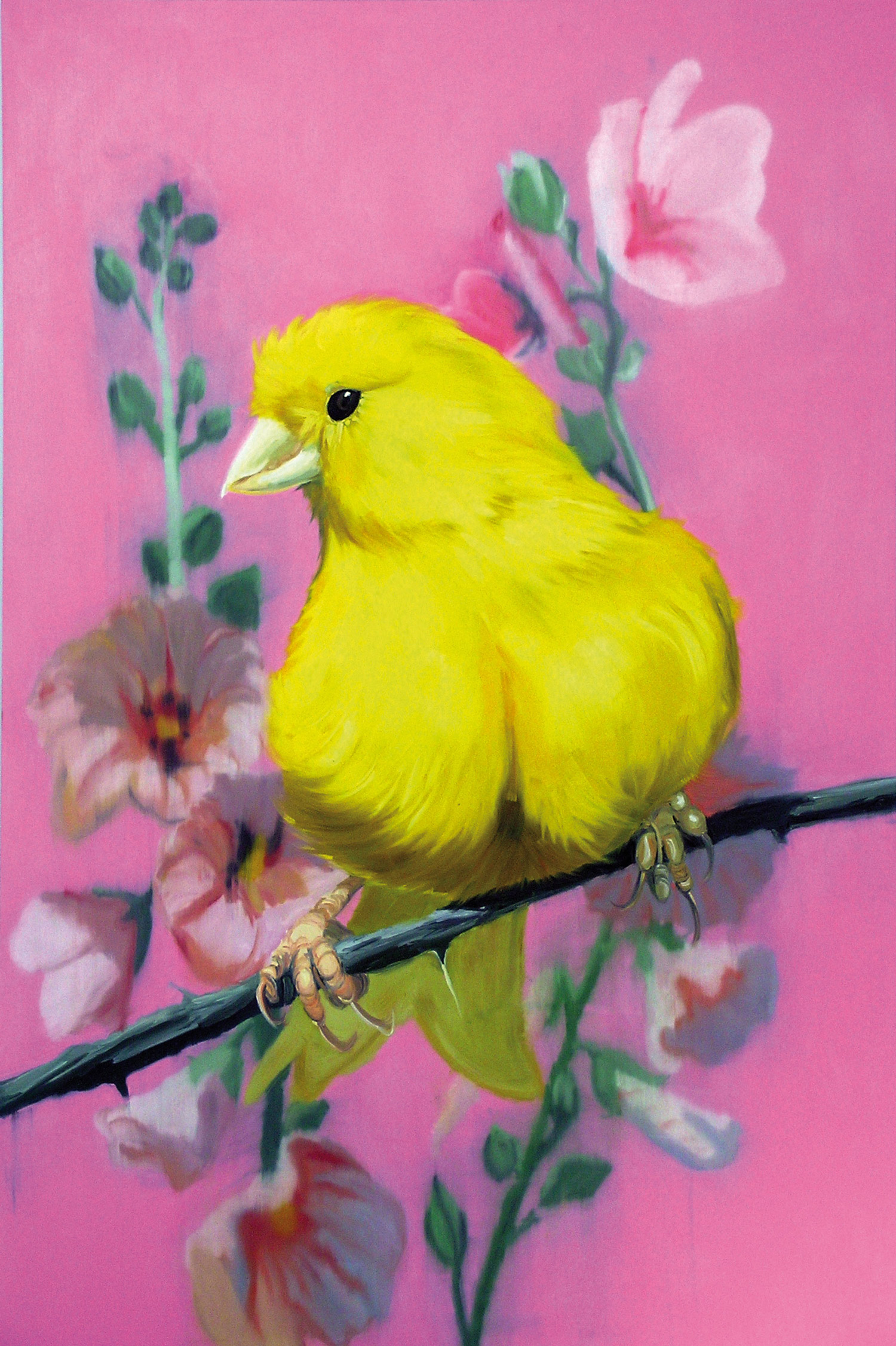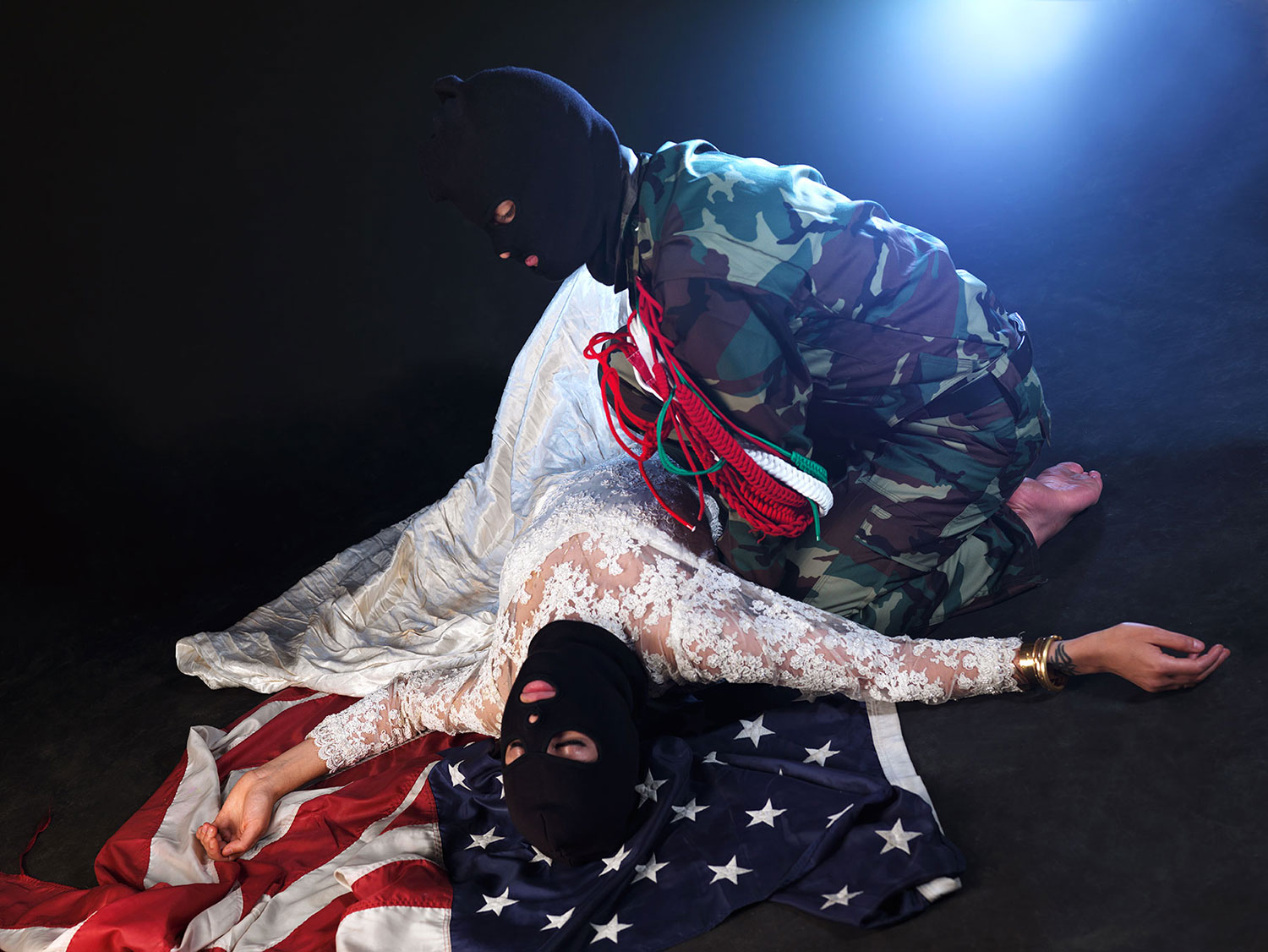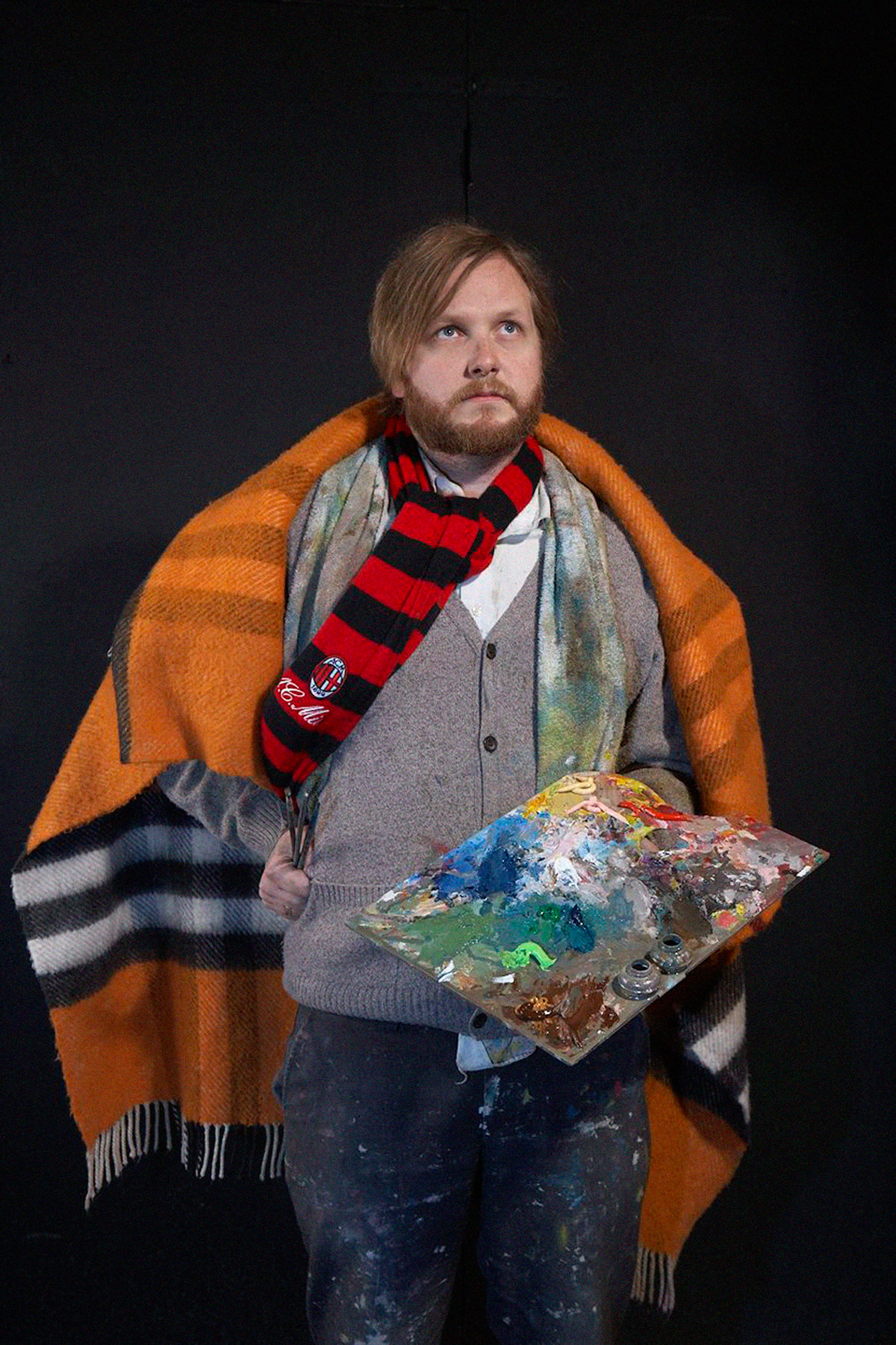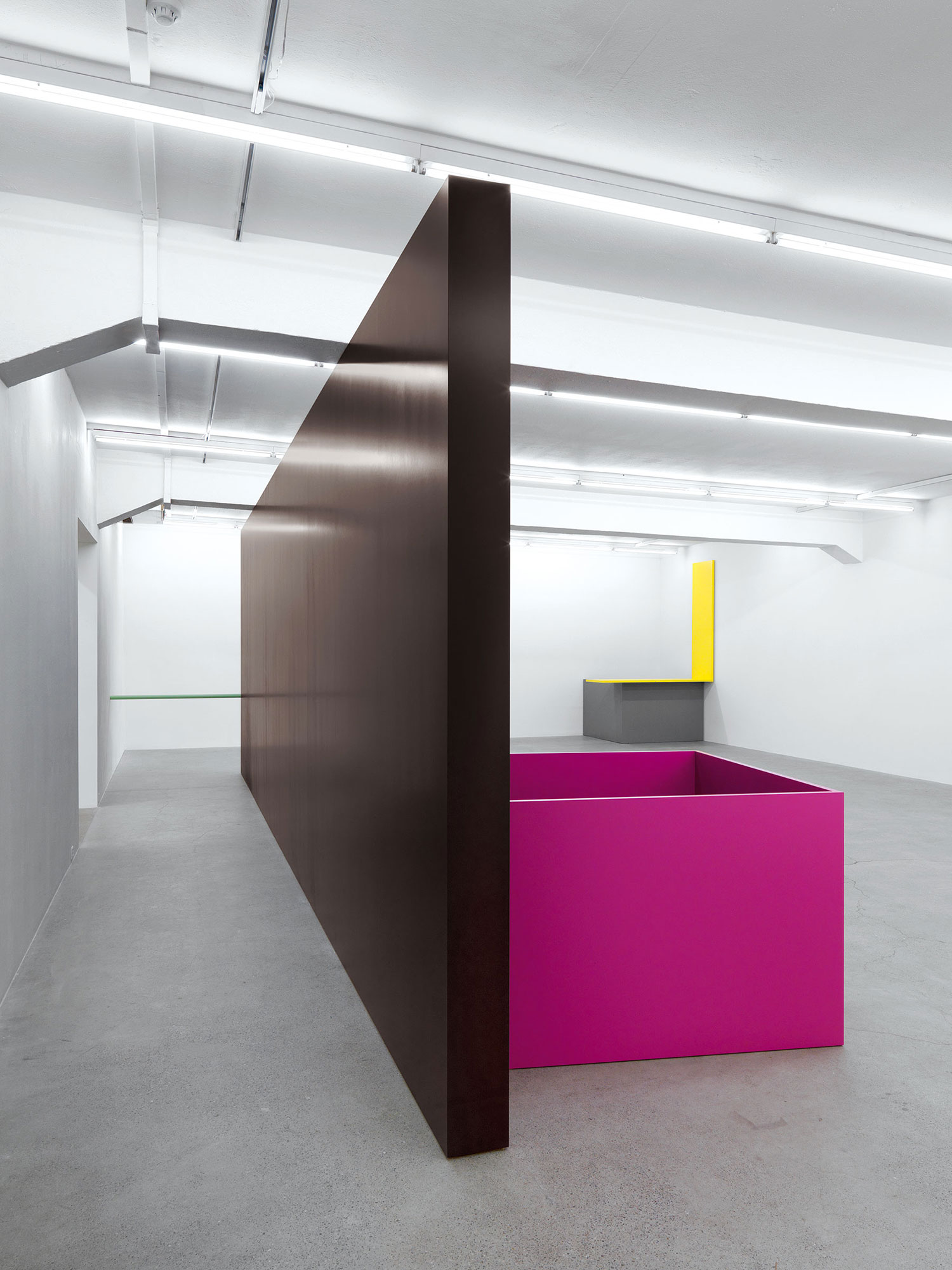
“Tropicality could be a way to identify a combination of landscape, abstract desires, and organic intentions, a very sensorial but also complex situation mixing the modernist will with an immature drift into the rainforest […] I am talking about moments, not only places; a combination of people, buildings, light, sound, plants, events that seem to display, citysize, a very inner state of things, what I sometimes call emotional traffic or emotional black market: the way we deal/negotiate internally to keep desire and beauty alive against all forms of control and authority. Tropical conditions seem able to reveal the beautiful, immature mess that generates modernity.”
—Dominique Gonzalez-Foerster
The exoticism often related to Latin America is a historical construct brought forth during colonization. The countries that constitute this region conjure up an optical illusion where notions of exuberance and infinite diversity prevail. It is an illusion shaped in accordance to the image of paradise where the vividness of the vernacular — when looked upon by the West — becomes a novelty and unexplored territory. Colombia belongs to this scene.
French artist Dominique Gonzalez-Foerster’s approach to “tropicality” has been largely influenced by her first-hand experience of Latin America and Japan. The possibility of rethinking herself within a foreign context has allowed the artist to construct a unique vision of tropical modernity as an expression that reveals a particular way of apprehending the world. Her visual manifestations disclose the concept’s inherent complexity and exuberant nature. Gonzalez-Foerster’s environments can be understood as mise-en-scenes where multiple reference points — literature, film, theater and music — intersect. Offering the spectator the opportunity to immerse himself in a complete perceptual experience, the artist’s atmospheric settings could be compared to the particular instance of going deep into the jungle while taking on the role of a hunter so as to establish an intimate link with the environment and ultimately taking charge of it.
Dismantling the seemingly simple ideas of “paradise” and “tropicality” is a wise gesture as it points to what lies beneath established concepts and preconceived notions. This breakdown of ideas can be translated into a semiotic game, a challenge to representation. Along these lines, Gonzalez-Foerster — both as an artist and theorist — invents, re-invents and constructs a visual story. In doing so, she brings forth a submerged yet present modernist idea that remains and crosses through the modes of Latin American artistic production, while simultaneously questioning the European tradition.
The cliché or primitive idea of that which could be labeled as “tropical” gets dismantled when the term, in its broadest sense, is carefully regarded as a “complex situation” involving the convergence of numerous issues, and the immersion of an image of nature containing a wide variety of landscapes and forms that inevitably transcend the perception of the world and its representation. Far from being homogeneous, Latin America is a diverse and multicultural region that elicits an alternate meaning of tropicality as a way of life or condition that permeates behavioral aspects and thoughts relating to a particular culture.
Gabriel Sierra, Rosario López, Alberto Baraya, Ana Maria Millán, Mateo López and Lucas Ospina: although engaging in distinct practices and media, these artists manipulate, question and explore our relationship with space while questioning and re-defining the term of tropicality.

Appeal to the senses
Gabriel Sierra’s artistic practice develops from his observations and experiences in everyday situations, and from his interest in how people relate to their surroundings and construct their own world. Often finding inspiration in Colombian popular culture while also drawing on the history of architecture, art and design, Sierra utilizes austere and common materials for the creation of simple yet sophisticated objects and environments. His spatial transformations are carried out through the inclusion and careful disposition of structures and elements within a specific space (or setting) where different types of situations and events converge and develop. In “Hang it All. Stepmothernature – series” (2006-08), modernity and tropicality come together in the form of a fruit rack made of modular metal structures and fresh fruit. What seems to be a clothing rack is actually a complex fruit bowl; a witty installation that provides us with an experience that will surely appeal to all of our senses.
Classifying the artifice
A self-proclaimed contemporary botanist, Alberto Baraya — like a naturalist from the past — is concerned with the classification of plants. Drawing from a variety of sources like the urban landscape, printed reproductions of plants and artificial flowers, Baraya seeks to grant man-made images their ‘natural’ appearance. Herbario de plantas artificiales [Herbarium of Artificial Plants] (2004) — the result of his investigation of specimens — allows the artist to exhibit his findings in an impeccable box. Rooted in the Botanical Expedition (1762) to the northern region of South America headed by Spanish botanist José Celestino Mutis, Baraya’s Herbarium unfolds in a day-to-day space, in an artificial ecosystem inhabited by man. It is the result of a recollection process that aims at creating a fabricated reality based on the scientific method for classifying plants; on this occasion, the plants are artificial. Baraya appropriates certain elements from the artificial flowers he collects and proceeds to creatively transform a fictitious aesthetic into a seemingly natural one. Fostered by an excessive artificiality, he sets out to re-invent the natural world. The concept of a setup is ever present in this project as the artist takes hold of objects and images that he intervenes upon and exhibits. Baraya’s displays are thought out setup pointing to the distortedness of an exotic setting.

A dialogue with nature
Rosario López could be thought of as a philosopher of the visual image. Her projects are pieced together primarily through the careful observation of the landscape. A fragment of nature captured in a photograph is the beginning of an assemblage process where such an image circulates and gets transferred to a different space: it moves from its place of origin to the gallery or museum environment. As a result of a simultaneous exploration of the media of sculpture and photography, López questions the concepts of space and time through reflections based on various philosophical issues posited by 20th-century authors (George Bataille, Jacques Derrida, Rosalind Krauss, Gilles Deleuze, Yves-Alain Bois, among others). Rather than presenting a re-presentation, López offers an interpretation of her visual dialogue with nature; the photographic image gives way to a theatrical action, a staged sensation that becomes a three-dimensional object. Abismo [Abyss] (2005) — exhibited at the Venice Biennale in 2007 — reflects upon notions of landscape and the horizon in response to the artist’s journeys to Machu Picchu and Paracas in Peru. The void becomes the main aspect of her trip to Paracas, while the monumental character of the stonewall stands as the memorable form from Machu Picchu. The abandoned houses in the desert and the presence of the stone walls are thus understood as two different forms of conceiving space that directly relate to the realm of sculpture.
Tropical thriller
Ana María Millán’s artistic practice reveals an interest in narrative forms ranging from horror films to soap operas which she uses to construct new stories that often act as commentaries on the contradictory aspects of the city of Cali. Concerned with exploring the local (that is Cali’s avant-garde film scene of the ’70s and ’80s) and the precarious nature of this Colombian city, Millán draws heavily on popular culture thereby signaling and legitimizing marginal cultural practices. The video Cali Choreography Dancing Show (2008) is a musical tour around Cali that ironically comments on the narrative of performance. It attempts to signal significant historical and cultural places around the city through a tripartite relationship involving location, music and choreography; for instance, Millán and her troupe of dancers perform a tropicalized version of Michael Jackson’s Thriller amidst the greenness of a sugar cane plantation.

Stories and anecdotes
For Mateo López, the medium of drawing is both an autonomous form of expression and an illustration of the artistic process. A highly skilled draftsman, López has gained notoriety for his simple yet exquisite drawings and three-dimensional paper objects comprising complex installations, many of which explore the theme of the portable artist’s studio. The installation Topografía Anecdótica [Anecdotal Topography] (2007) is a compilation and interpretative process of Diario de Motocicleta [Motorcycle Diary] 2007, one of his major works to date, where the artist traveled across Colombia on a Vespa motorcycle while putting together an installation of drawings, diaries, maps, photographs and intervened objects, which acted as visual commentaries of his journey. Like a 20th-century romantic traveler, López would stop randomly to make drawings of landscapes, architectural details, billboards, restaurant signs and abandoned train stations, all idiosyncratic features of specific places. A body of work capable of seducing and surprising the spectator thanks to the artist’s astounding capacity for transforming the most modest materials, Topografía Anecdótica evidences the deliberate yet keen manner in which López observes and humorously re-interprets vast spaces while focusing his attention on minute details. His mental impressions — most of which were brought into fruition after the artist’s arrival in Bogota — are materialized into clever works ranging from sculptures, drawings and found objects that recount stories and anecdotes of places and historical events.
Critical fiction
Lucas Ospina creates peculiar representations where the graphite line and watercolor stains constitute striking human figures with enhanced corporeal gestures standing amid white, empty settings. A blank sheet of paper functions both as medium and space where the artist gives form to his bizarre characters. The critical sense — so central to Ospina’s work both as a critic and artist — comes forth in his drawings through the subtle presence of a cartoonish quality that permeates his images. His series “La crítica” [The Critique] (2009) is a collection of recent drawings gathered under a provocative title featuring faceless, lightly clothed and erotic figures engaged in action. The tenuous graphite line and the subtlety of the watercolor stand in contrast to the slight nudity of the figures and the visual weight of the fragment containing the mass of color. Ospina’s ability to employ line as a means for exploring and representing the body through vigorous visual forms that often take on the form of nature speaks of a certain exuberance. When asked if this work had a tropical quality granted by the forms of the local landscape, the artist responded: “Perhaps I draw bodies because they allow me to break the line and make it sinuous…they grant me the opportunity to create contortions and formal pirouettes, just like a plant does…”
Viewing the works of six Colombian contemporary artists within the framework of tropical modernity as posited by Gonzalez-Foerster provides a new understanding of their artistic production; we are invited to avoid presuppositions while developing profound visions and engaging in critical readings. Although there is an implicit danger in the act of categorizing such disparate practices under this term, it nonetheless proves to be useful for analyzing visual vocabularies produced within a specific geographical context that seem to be engaging in the hermeneutical task of assimilating and interpreting the notion of tropicality from a particular artistic standpoint.

